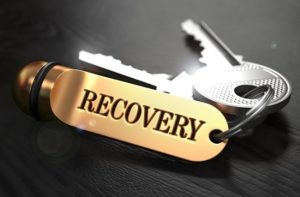Alcohol Addiction
Sections: Recovery | Finding Hope | Alcoholism & The U.S. | Causes of Alcoholism | Symptoms | Withdrawals | Spotting the Signs
Like all addictive substances, alcohol affects people differently. Some are nearly immune to its power. They can raise a glass, take a sip, and move on without a care in the world. Others can’t escape its influence. They face a lifelong battle to control their cravings. As time goes by, they require more drinks to satisfy their body’s growing tolerance. The alcohol takes over, and the fight for sobriety begins.
Fortunately, dependence need not have the last word. Every year, countless people recognize the seriousness of the situation and seek alcohol addiction treatment. Instead of watching the disease slowly undermine their physical and mental health, they reach out to an alcohol rehab center that knows how to provide comprehensive care and long-term support.
ALCOHOL ADDICTION TREATMENT SHOULD BE SAFE, AFFORDABLE, AND EFFECTIVE

Yellowstone Recovery is committed to helping people understand alcohol addiction and wean themselves off the substance. Whether you’re just starting your journey to sobriety or you’re continuing down the path to health and wellness, we provide a supportive environment in which you can regain your independence.
We encourage you to reach out to us and tell us your story. Call us or send us a message to learn more about how our affordable alcohol addiction treatment programs can help you or your loved one overcome alcohol problems.
THERE IS HOPE FOR PEOPLE WHO STRUGGLE WITH ALCOHOL USE DISORDER
Some drinkers shrug off their addiction—they believe the long-term consequences will never catch up to them. Others are overwhelmed by a sense of shame and fear. The prognosis is neither as rosy nor as bleak as many believe. Alcohol addiction can be dangerous—but if experience has taught us anything, recovery is possible. Alcohol use disorders can be conquered with the right treatment.
In fact, according to the National Institute on Alcohol Abuse and Alcoholism (NIAAA), approximately one-third of people recover from their alcohol addiction and display no symptoms after one year. Many others can manage the condition and get their alcohol-related problems under control.
Effective recovery starts with alcohol detox, which helps people overcome the dangerous effects of withdrawal. Once the initial step is complete, treatment options include everything from group counseling to one-on-one behavior modification therapy.
ALCOHOL ADDICTION REMAINS A SERIOUS PUBLIC HEALTH CONCERN IN THE U.S.
Alcohol use disorder (AUD) receives relatively little media attention, yet it remains one of the most common and most devastating substance abuse disorders in the world. According to the 2021 National Survey on Drug Use and Health, over 11 percent of adults ages 18 and older report suffering from AUD. That means over 28 million people in the United States alone are burdened with the devastating effects of alcohol-related illnesses.
Unfortunately, society often turns a blind eye to alcohol dependency. Alcohol is not only legal, but it’s socially acceptable. All over the world, people end their workdays with a beer or a glass of wine, yet few stop to consider its addictive potential.
Indeed, far too many casual drinkers blame the victims of alcohol instead of helping them create a positive environment. Their ability to drink in moderation blinds them to the struggles of others. They can’t understand why so many millions are unable to stop after one or two drinks. Such a lack of empathy only increases the sense of shame and isolation in people who suffer from alcohol use disorder.
MANY FACTORS LEAD TO ALCOHOL USE DISORDER
Many people want to know what makes alcohol addictive, but no one can say with certainty what “causes” addiction. Many factors contribute to the disease, making it hard to isolate any one cause. When it comes to understanding alcohol addiction, scientists and physicians know that genetics play a role, as do environmental factors such as family, friends, and social influences. Indeed, health professionals have long known that a family history of alcoholism is a key risk factor.
A person’s emotional and mental health also increases the likelihood of developing an alcohol-related problem. Research has consistently shown that those who suffer from other mental conditions such as depression, anxiety, or bipolar disorder have a higher rate of alcohol use. All too often, victims choose to self-medicate rather than seek professional help.
SYMPTOMS CAN VARY DEPENDING ON THE SEVERITY OF THE CASE
Alcohol disorders range in severity from mild to severe. Some people can lead a fully functional life in spite of their condition. They go to work every day, manage their personal affairs, and care for their families. Few around them can see through the mask, where feelings of helplessness and shame go unnoticed, silently eroding their self-esteem. Others struggle to keep up a normal life. They frequently lose jobs, abandon relationships, and ignore basic daily tasks. They may even fail to maintain basic hygiene.

How can you tell whether someone has a potentially serious problem? The National Institute on Alcohol Abuse and Alcoholism uses an 11-point assessment to determine whether someone suffers from AUD. A series of questions helps people gauge their ability to control their drinking.
Typically, doctors advise people to seek help from an alcohol addiction treatment center if they display two or more of the following behavior patterns:
- They drink more alcohol than intended.
- They find that they’re unable to cut back on their drinking in spite of a sincere desire to do so.
- They experience cravings that are difficult to control.
- They develop a tolerance, which forces them to drink more alcohol in order to experience the same effects.
- They cut back on other activities so they can spend more time drinking.
- They begin to neglect family, friends, work, and hobbies.
- They continue to drink despite suffering negative effects such as blackouts.
- They experience withdrawal symptoms after a short dry spell.
WITHDRAWAL SHOULD BE HANDLED WITH EXTREME CARE
Withdrawal symptoms constitute some of the most serious side effects of AUD. They indicate that a person has developed a tolerance to alcohol and needs help overcoming his or her dependence. Symptoms may include:
- Anxiety and irritability
- Depression
- Fatigue
- Sweating
- Trembling or shaking
- Nausea and vomiting
- Insomnia
- Headache
- Loss of appetite
In severe cases, withdrawal can lead to hallucinations, seizures, and even death. In general, the more serious the condition, the harder it is to safely quit. That’s why it’s crucial to speak with a professional rehab center before ceasing alcohol use.
MANY PEOPLE IGNORE THE SIGNS UNTIL IT’S TOO LATE FOR PREVENTION
An alcohol problem can be obvious to friends and family or it can hide under a thin veneer of sociability. “They just love a good drink,” people say with a laugh while ignoring the signs of trouble.
Alcohol disorders can even catch the drinker off guard. In far too many cases, dependency develops gradually, sneaking up on unsuspecting people before they’re fully cognizant of the fact. They believe they’re simply having a good time, relaxing at the end of a long, hard day. By the time someone realizes they have a problem, it’s too late to prevent addiction—but it’s never too late to seek out the help needed to gain sobriety.
ALCOHOL ADDICTION RECOVERY TIMELINE
The alcoholism recovery timeline is a personalized journey and can vary widely among individuals. However, it generally follows a pattern with several distinct stages:
Detoxification (Detox): This initial stage usually lasts from a few days up to two weeks. During this period, the body clears itself of alcohol, and withdrawal symptoms are most intense. Medical supervision is often recommended as withdrawal can be dangerous.
Early Abstinence: After detox, the early abstinence phase begins and can last for several weeks to months. Cravings for alcohol can be strong, and the risk of relapse is high. Psychological support, therapy, and possibly medications are important during this time.
Continued Abstinence: Continuing on from early abstinence, this phase can last from several months to a year. The individual learns coping skills to deal with triggers and cravings. Relapse can still occur, but with continued support, the risk decreases over time.
Maintenance: Once an individual has remained abstinent for an extended period (typically over a year), the maintenance phase begins. The focus here is on sustaining recovery through lifestyle changes, ongoing support, and personal growth.
GET THE HELP YOU NEED FOR ALCOHOL ADDICTION IN ORANGE COUNTY
If you or someone you love is struggling with alcohol addiction, know that assistance is always available and a healthy, sober life is possible. Reach out to Yellowstone Recovery Center at (888) 418-4188 for affordable, comprehensive support in Orange County.
Taking that first step towards recovery can be challenging, but it’s a courageous move toward a healthier, sober life. Call today to speak with a compassionate professional who can guide you through the process and provide the support you need through every stage of recovery.
- Treatment Options
- Program Curriculum
- Program Services








